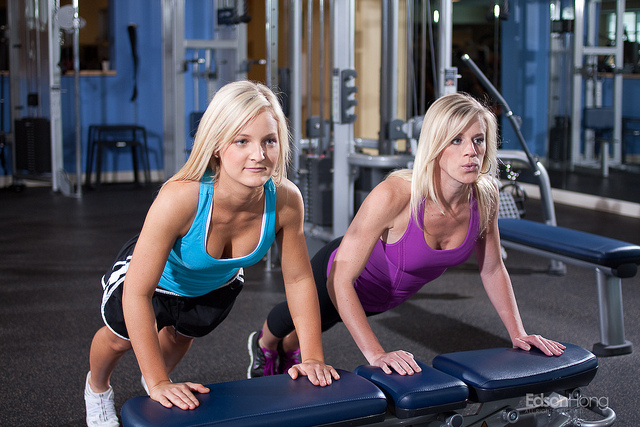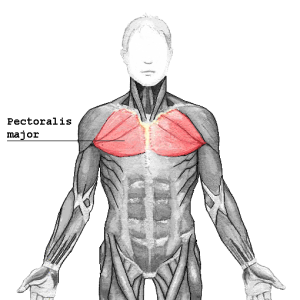
If you’re looking to build up your chest, you’ll want to target your pectoralis major muscles. In today’s Guide to Your Muscles, we’ll look at the anatomy of your pectoralis major muscles, and some good ways to keep them in shape.
Anatomy & Function
The most prominent muscle in your chest is the pectoralis major (collectively the pectorals or “pecs”), a large, roughly fan-shaped muscle.
Your pectorals originate in two places: at the clavicle or collarbone, and at the sternum and ribs. Proceeding from these two “heads”, your pectorals anchor at the humerus, the long bone that forms the upper arm.
The main function of the pectorals is to control arm movements. You use your pectorals every time you pull your arms in toward your chest, rotate them, raise them vertically, or even move them laterally.
They’re also invaluable for helping you to take deep breaths: they pull on the ribcage, creating more room in which your lungs can expand.

Exercises—Weight-Lifting:
First, a caution: if you’re new to weight-lifting chest exercises, always use an experienced spotter and be conservative with the amount of weight to guard against injury.
The barbell bench press is a good chest exercise. Lie back on the bench, gripping the weight at a medium width, a little wider than shoulder width. Bring the bar down to your middle chest, then push it back up after a brief pause.
If you’re an experienced weight-lifter and want to build your chest, you might try the 180-degree twisting dumbbell bench press. Basically, you will bench-press dumbbells while rotating your grip 180 degrees.
Get into position, lying back on your bench with the dumbbells raised over your chest. Start with a standard grip, palms forward.
Lower the dumbbells to your outer chest, then press upward, rotating your wrists 180 degrees. Hold for a couple of seconds, and then repeat.
Exercises—Without Weights:
Pushups are some of the best and most common bodyweight exercises for the pectorals. For the standard pushup, keep your hands flat and slightly wider than your shoulders.
Keeping your body straight, toes on the floor and knees off it, raise yourself up until your arms are straight. Lower yourself back to the floor, and repeat as desired.
For variation, try the wide-grip pushup. Place your hands farther apart than you usually would, about five to six inches wider than your shoulders. Raise yourself up, lower yourself until your chest is about two inches from the floor, and then repeat.
The decline pushup is another variant that adds unique challenges of its own. Place your feet on a sturdy object, bringing them up at least 12 inches off the floor, and do pushups. You can use a stability ball for an added challenge.
Whether you prefer weights, bodyweight exercises or a combination, the exercises discussed here are a good start on getting toned pectorals!
It’s probably worth repeating that it’s a good idea to be careful when lifting weights, so as to avoid the very painful condition of “pulled” chest muscles, also known as torn or strained pectorals. Get someone to spot for you, and don’t lift too much weight.
As ever, stay safe and have fun!



